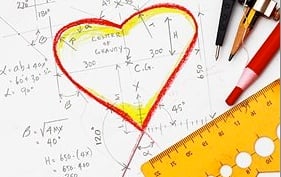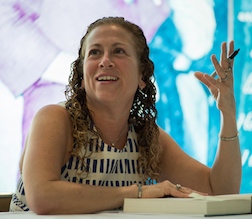Mathematics. Trust me. It’s important in your life
 Who uses calculus? You do. Every day. Dr Ron Sandland celebrates the International Year of the Mathematics of Planet Earth.
Who uses calculus? You do. Every day. Dr Ron Sandland celebrates the International Year of the Mathematics of Planet Earth.
The American writer Jodi Picoult (seen here) was invited to contribute to Dear Me, in which she wrote a letter to her younger 16-year old self. It contains some very warm and witty advice, but I was particularly struck by her fourth recommendation; “Calculus. Trust me. You will never use it.”
While I can quite believe that Ms Picoult seldom (OK, never) sits down to solve a differential equation, she is probably unaware of just how much calculus and other areas of advanced mathematics affect her daily life.
For example, I used Google to track down Ms Picoult’s quote. Google uses sophisticated mathematical and statistical algorithms to search for the information you need. Amazon is increasing its stretch as a retailer by linking its customers’ preferences across a range of different product areas and presenting tantalising recommendations to its users.
How does Facebook find friends for you? How do you discover the links you want on Twitter? These are all based on proprietary algorithms developed by mathematicians and computer scientists. And the effects have been staggering. They have altered the way society works with information about just about everything available at the touch of a smart phone.
The market value of Google, Amazon, Facebook and Twitter, all built on intellectual property based on mathematical algorithms, is not much short of half a trillion dollars at current market values. Their algorithms have created value roughly equivalent to BHP, RioTinto and CBA combined!
And, in passing, the technology that underpinned CSIRO’s wireless LAN patent that enables billions of devices such as smart phones, tablets and computers to connect wirelessly came out of CSIRO’s pioneering work in radioastronomy. In CSIRO’s words:
“That work involved complex mathematics known as ‘fast Fourier transforms’ as well as detailed knowledge about radio waves and their behaviour in different environments.“
Fourier transforms are a discovery from harmonic analysis, itself an advanced branch of calculus. In fact our daily lives have been deeply touched by calculus.
Algorithms are amazing
When it comes to the mathematics of planet earth, one of the most striking examples of mathematics in action has been the development of Google Maps, which uses advanced imaging algorithms to enable us to find places, directions, zoom in and out, change the level of detail, and find a restaurant we’d like to dine at.
(Read the full article at abc.net.au)
